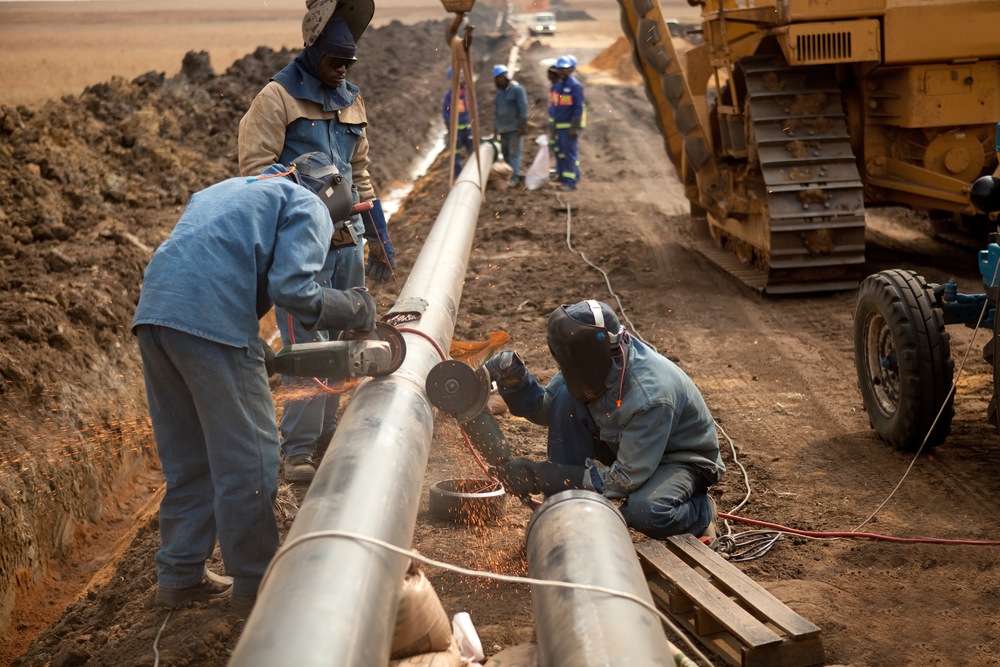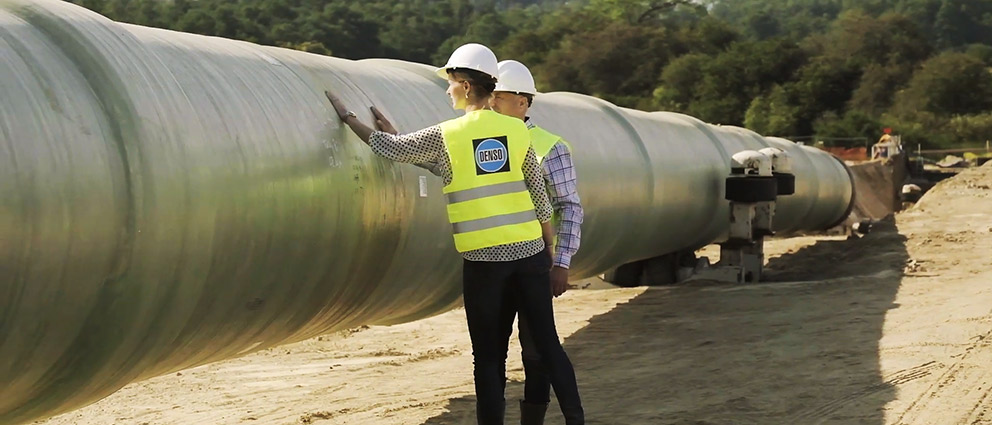Creek Pipe Midland TX: Innovative pipeline monitoring systems you should know
Wiki Article
Understanding the Trick Features of Pipeline Solutions and Their Effect On Performance
Pipeline services play a crucial role in various industries, influencing operational efficiency noticeably. Key attributes, such as sophisticated tracking innovations and maintenance methods, are important for decreasing downtime. Additionally, governing compliance guarantees safety and security and environmental security. The interplay between style, facilities, and economic aspects can make complex these procedures. Recognizing just how these components impact overall efficiency elevates important inquiries regarding ideal techniques and future growths in the area.The Duty of Technology in Pipeline Tracking
As innovations in innovation proceed to advance, the importance of efficient pipeline surveillance has become progressively apparent. Modern pipe systems rely upon innovative tracking tools that enhance operational efficiency and safety. Technologies such as real-time information analytics, sensing units, and drones offer drivers with immediate insights into pipeline conditions, enabling them to find leakages, deterioration, and various other prospective problems before they rise right into considerable issues.The integration of Internet of Points (IoT) gadgets has actually changed typical tracking methods, permitting for continual monitoring and automated coverage. This positive strategy not just decreases risks yet also maximizes upkeep routines and source allotment. In addition, progressed software systems help with data visualization and analysis, equipping decision-makers to respond swiftly to anomalies. Jointly, these technical developments not just boost pipe integrity yet also foster environmental stewardship by mitigating the possible impact of leaks and spills.
Upkeep Techniques for Enhanced Effectiveness
Reliable maintenance methods are crucial for optimizing pipe efficiency. Carrying out anticipating maintenance methods, sticking to routine evaluation protocols, and creating robust emergency reaction strategies can significantly boost operational dependability. These techniques not just reduce downtime but additionally add to the total safety and security and honesty of pipeline systems.Predictive Maintenance Techniques
Predictive upkeep techniques are progressively acknowledged for their capability to enhance operational effectiveness in pipeline solutions. By leveraging data analytics and monitoring innovations, these strategies enable operators to anticipate equipment failures prior to they happen. This positive technique lessens unintended downtime, reduces upkeep prices, and expands the life-span of vital possessions. Sensors and IoT devices play a critical function in accumulating real-time information, enabling for the assessment of equipment health and wellness and efficiency patterns. Artificial intelligence algorithms evaluate this data to recognize patterns and anticipate prospective problems. Pipeline operators can arrange maintenance activities during non-peak times, optimizing source allotment and ensuring continual procedure. Eventually, the adoption of anticipating maintenance cultivates a much more trusted and effective pipeline framework.
Routine Assessment Protocols
Routine inspection methods work as a keystone of upkeep approaches focused on boosting effectiveness in pipe operations - Creek Pipe local contractor. These protocols involve methodical evaluations of pipeline integrity, concentrating on finding possible problems before they escalate. Regular inspections normally include visual evaluations, leak discovery modern technologies, and stress monitoring to ensure peak performance. By adhering to well-known routines, drivers can determine corrosion, material wear, or blockage, consequently lessening downtime and repair service prices. Furthermore, information gathered during evaluations can inform predictive maintenance initiatives, enabling an aggressive strategy to pipeline management. Ultimately, routine inspections not just extend the life-span of pipe infrastructure yet additionally add to more secure and much more reputable transportation of sources, strengthening total operational efficiencyEmergency Situation Reaction Preparation
Emergency action preparation is necessary for preserving efficiency in pipeline operations, ensuring that operators are prepared to resolve unanticipated incidents quickly and properly. A well-structured emergency response strategy includes clear protocols, designated functions, and interaction strategies to mitigate dangers linked with pipeline failings. Normal drills and training enhance team preparedness and acquaint personnel with emergency situation procedures. In addition, having easily available resources, such as spill containment devices and emergency situation get in touch with checklists, can considerably minimize reaction times. By integrating real-time surveillance innovations, operators can promptly recognize and respond to concerns, decreasing ecological influence and operational downtime. Ultimately, a comprehensive emergency action strategy not just safeguards properties and personnel however additionally reinforces the overall effectiveness of pipe services.Regulative Compliance and Security Requirements
Governing compliance and safety and security criteria play a crucial duty in the pipe services industry. Creek Pipe local contractor. Complying with industry guidelines assures that business execute reliable safety protocols and take the chance of administration strategies. This dedication not just protects workers and the environment yet additionally boosts overall functional efficiencyConformity With Sector Rules
Compliance with industry policies is essential for guaranteeing the safety and efficiency of pipe procedures. Regulative frameworks, such as those established by the Epa (EPA) and the Pipeline and Hazardous Materials Security Management (PHMSA), set stringent requirements that operators have to adhere to. These policies cover various elements, including pipe style, construction, upkeep, and tracking, guaranteeing that systems operate safely and successfully. Non-compliance can cause severe penalties, functional delays, and ecological risks. By adhering to these guidelines, pipeline firms not only shield public safety and the atmosphere however additionally enhance their operational efficiency. Ultimately, regulatory conformity fosters trust amongst stakeholders, ensuring that pipe solutions can run perfectly in a competitive landscape while fulfilling legal obligations.
Security Procedure Execution
Efficient security protocol application is an essential part of pipeline operations, closely connected to regulative conformity and security requirements. Following these procedures not just ensures the defense of employees but also safeguards the atmosphere and infrastructure. A robust safety and security framework consists of normal training, detailed inspections, and making use of appropriate safety and security tools. Organizations has to remain vigilant in updating their procedures to mirror changes in policies and technological developments. Compliance with established security criteria reduces the danger of mishaps and enhances operational efficiency. Additionally, a society of safety fosters staff member interaction and responsibility, contributing to total organizational success. Inevitably, reliable safety and security procedure application is paramount in keeping the stability of pipeline solutions and accomplishing lasting sustainability in procedures.Danger Administration Strategies
Executing robust danger management methods is essential for ensuring that pipeline procedures abide by regulatory demands and security criteria. Organizations has to determine possible risks and examine threats related to pipe activities. This entails carrying out comprehensive examinations, using sophisticated surveillance innovations, and preserving compliance with sector regulations. Normal training for workers on safety protocols boosts situational understanding and prepares teams to react properly to emergencies. In addition, establishing contingency plans and carrying out drills can considerably minimize dangers. Collaborating with regulative bodies guarantees alignment with developing safety standards. By prioritizing risk management, pipe services can enhance operational effectiveness while safeguarding both the setting and public safety. Inevitably, an aggressive strategy to run the risk of management promotes a culture of security within the sector.Pipeline Layout and Infrastructure Considerations
Exactly how can the layout and framework of pipelines affect overall operational efficiency? The configuration of pipes plays a crucial function in determining their performance. Effective style lessens rubbing losses, therefore lowering power usage during fluid transportation. Elements such as size, product option, and design directly effect flow rates and maintenance requirements.In addition, calculated placement of valves and keeping an eye on systems boosts operational control and safety. Creek Pipe Midland TX. Facilities considerations, consisting of accessibility for upkeep and repair, considerably influence downtime and overall productivity
Moreover, integrating advanced modern technology for real-time surveillance promotes prompt detection of leakages or inadequacies, making sure quick actions to concerns. The overall architectural integrity, influenced by material longevity and ecological factors, also forms long-lasting functional success. Thoughtful design and durable infrastructure are necessary for making best use of pipeline performance, ultimately contributing to the dependability and profitability of pipe services.
Environmental Effect and Sustainability Practices
While the need for pipeline services proceeds to expand, understanding the environmental effect and taking on sustainability methods has actually ended up being progressively important. The construction and operation of pipelines can notably influence ecological communities, wild animals habitats, and water sources. To mitigate these impacts, firms are carrying out sophisticated innovations and techniques focused on minimizing discharges, protecting against spills, and lessening land interruption.
Sustainability efforts usually consist of making use of eco-friendly materials, enhancing energy efficiency, Creek Pipe local contractor and employing renewable resource resources to power operations. Additionally, business are increasingly performing thorough ecological assessments prior to project initiation, making sure conformity with laws and stakeholder interaction.

Price Monitoring and Economic Consider Pipeline Providers
As the pipe market grows, efficient expense administration and comprehending economic aspects come to be necessary for maintaining competitiveness. Firms face various economic pressures, including varying material expenses, labor costs, and governing compliance costs. To browse these challenges, pipe solution carriers need to embrace calculated monetary planning and budgeting methods.Investing in technology can boost operational efficiency, eventually decreasing costs with time. In addition, effective task management warranties that sources are allocated effectively, lessening hold-ups and unexpected costs.

Market conditions, such as demand for energy and geopolitical aspects, likewise influence economic viability. Business should stay agile, readjusting their strategies in response to these exterior factors.
Frequently Asked Inquiries
What Are the Different Types of Pipeline Services Available?
Numerous sorts of pipeline services consist of transport, storage, maintenance, evaluation, and fixing. Each service plays an important function in guaranteeing the seamless movement of products, improving safety, and reducing operational interruptions across different industries.How Commonly Should Pipeline Inspections Be Performed?
Pipeline inspections need to be conducted consistently, commonly each to three years, depending upon the type and problem of the pipeline. More regular assessments may be essential for older or high-risk pipes to assure safety and security and integrity.
What Are the Key Causes of Pipeline Failings?
The major root causes of pipeline failings consist of corrosion, defective building and construction, product issues, outside damage, leaks, and operational errors. Each element contributes substantially to prospective risks, highlighting the importance of regular maintenance and monitoring for security.Exactly How Can Companies Improve Pipeline Solution Reliability?
Companies can boost pipeline service dependability by applying routine upkeep schedules, using advanced tracking modern technologies, performing complete inspections, spending in staff member training, and embracing proactive threat management strategies to expect and alleviate prospective failures.What Role Do Operators Play in Pipeline Services?
Operators play a vital role in pipe solutions by making certain secure transportation, keeping devices, keeping track of system honesty, working with maintenance, and responding to emergencies. Their know-how directly affects functional efficiency and minimizes disruptions in service distribution.Report this wiki page